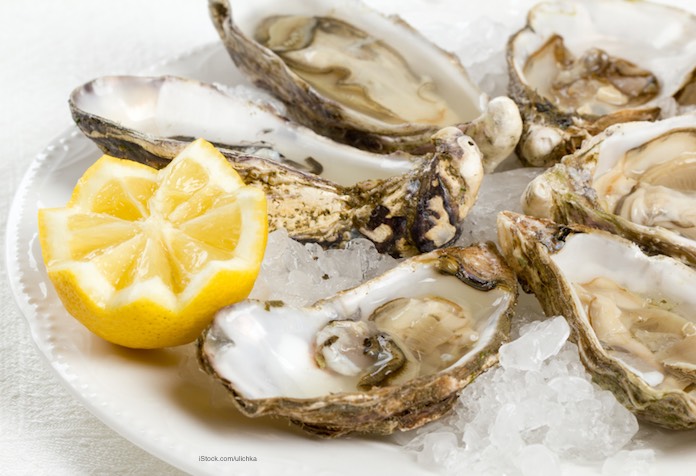Climate change is increasing the number of pathogens in oysters, according to a study published in the National Academy of Sciences. The bacteria Vibrio parahaemolyticus and vulnificus occur naturally in the ocean. Their numbers increase when the water temperatures increase.

And oysters, since they are filter feeders, take up these bacteria. When the oysters are eaten raw, people get sick.
There have been been many harvesting warnings and recalls of oysters for these pathogenic bacteria in the past few years. And in 2013, there was a Vibrio outbreak associated with raw oysters that sickened at least 104 people in 13 states.
Most of these illnesses occur during May to October in the United States, when people eat raw oysters. The bacteria reproduce quickly when the water is warm.
Vibrio bacteria belong to a class of marine life called prokaryotes. That is the largest living biomass in the world’s oceans. The study looked at formalin-preserved plankton samples collected during the last 50 years in the North Atlantic.
The study “provided experimental evidence on the link between multidecadal climatic variability in the temperature North Atlantic and the presence and spread of an important group of marine prokaryotes, the vibrios, which are responsible for several infections in both humans and animals.” Scientists found that long-term increase in Vibrio abundance is promoted by increasing sea surface temperatures.
The scientists added, “such increases are associated with an unprecedented occurrence of environmentally acquired Vibrio infections in the human population of Northern Europe and the Atlantic coast of the United States in recent years.”
A Vibrio infection is serious and can be fatal. The Centers for Disease Control and Prevention states that in 2014, 27% of Americans who infected with these pathogenic bacteria were hospitalized. Four percent of those patients died.
The symptoms of a Vibrio infection include abdominal cramps, nausea, watery and bloody diarrhea, vomiting, fever, and a headache. These symptoms usually last one to seven days. People with weakened immune systems are most likely to suffer severe illness when they contract this infection.
To avoid Vibrio infections, do not eat raw oysters and cook all shellfish to safe final internal temperatures. Pay attention to warnings posted by states and communities for harvesting shellfish. And do not touch raw seafood if you have an open cut or wound.




